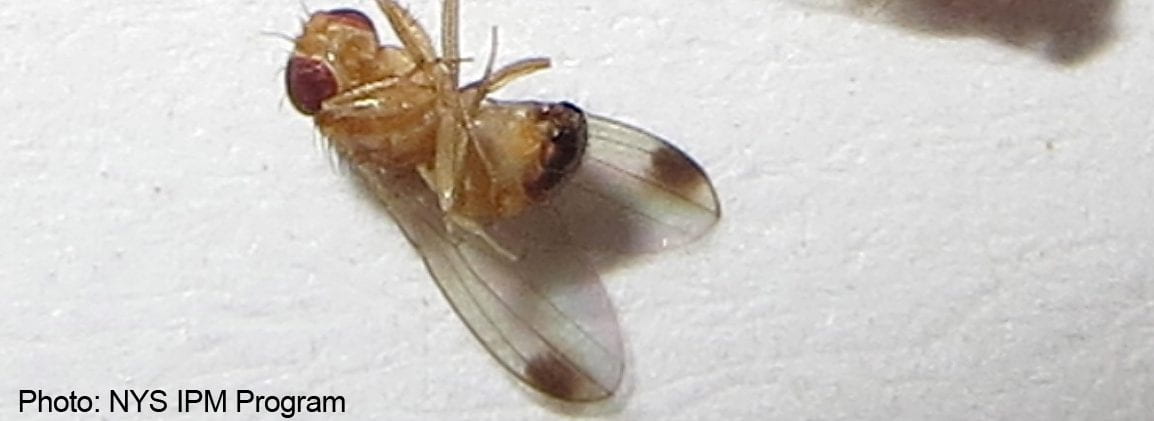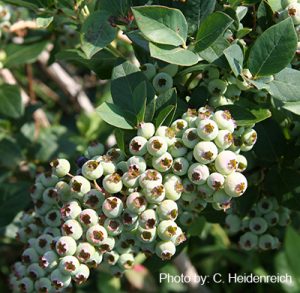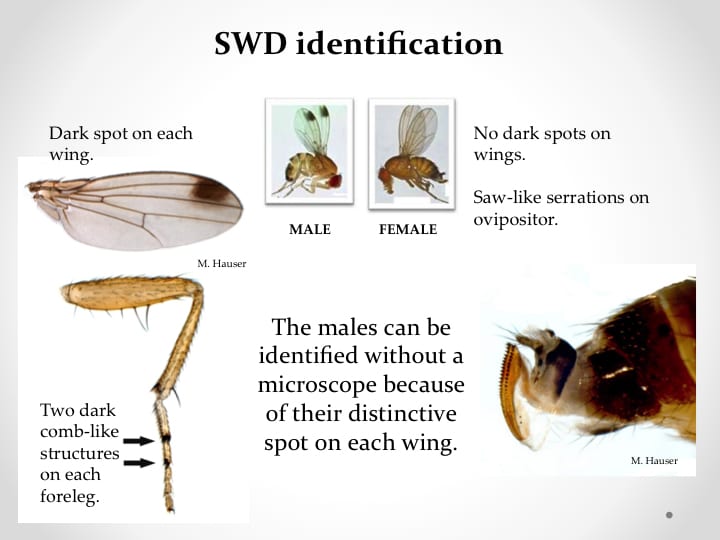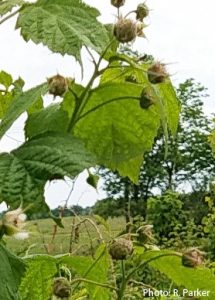A total of 6 male and 8 female SWD were first caught at two locations in Suffolk County, Long Island, in four traps checked on June 10, set, two each, in raspberries and blueberries. The following week, on June 16, sustained catch was obtained at these two sites with a total of 15 male and 18 female SWD being found. These traps are being monitored by Faruque Zaman, Suffolk County Cornell Cooperative Extension.
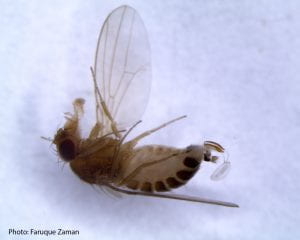
Female SWD being seen under the microscope have evidence of egg development. They are ready and willing to lay eggs in your fruit once it ripens.
Fruit at both locations is still green and hard, although ripening will be proceeding. Growers should be watchful for the onset of ripening, which signals fruit susceptibility to SWD egg laying and risk of subsequent infestation. Keeping tabs on fruit maturity is particularly important because SWD populations are on the rise in these locations on Long Island.
Think SWD management - mowing row middles, weed management within the row, pruning to improve air circulation, monitoring for SWD and for fruit infestation, sanitation of cull fruit, cold storage after harvest.
Raspberries and blueberries can tolerate cold storage temperatures close to 32° F, so don't be afraid to put your fruit in a cold storage to keep it crisp and fresh and kill or slow down SWD egg and larval development.
Consider all the things you can do to thwart this insect that will enhance the efficacy of your insecticide management program. Then plan accordingly. Updated Insecticide Quick Guides for NY State are found here (refresh the page to get the latest version):
- For berry crops http://www.hort.cornell.edu/fruit/pdfs/swd/berry-insecticides.pdf
- For stone fruit and grapes http://www.hort.cornell.edu/fruit/pdfs/swd/treefruit-grape-insecticides.pdf
Learn everything you can about SWD. Start by checking out the information on Cornell Fruit Resources Spotted Wing Drosophila, fruit.cornell.edu/spottedwing/.

